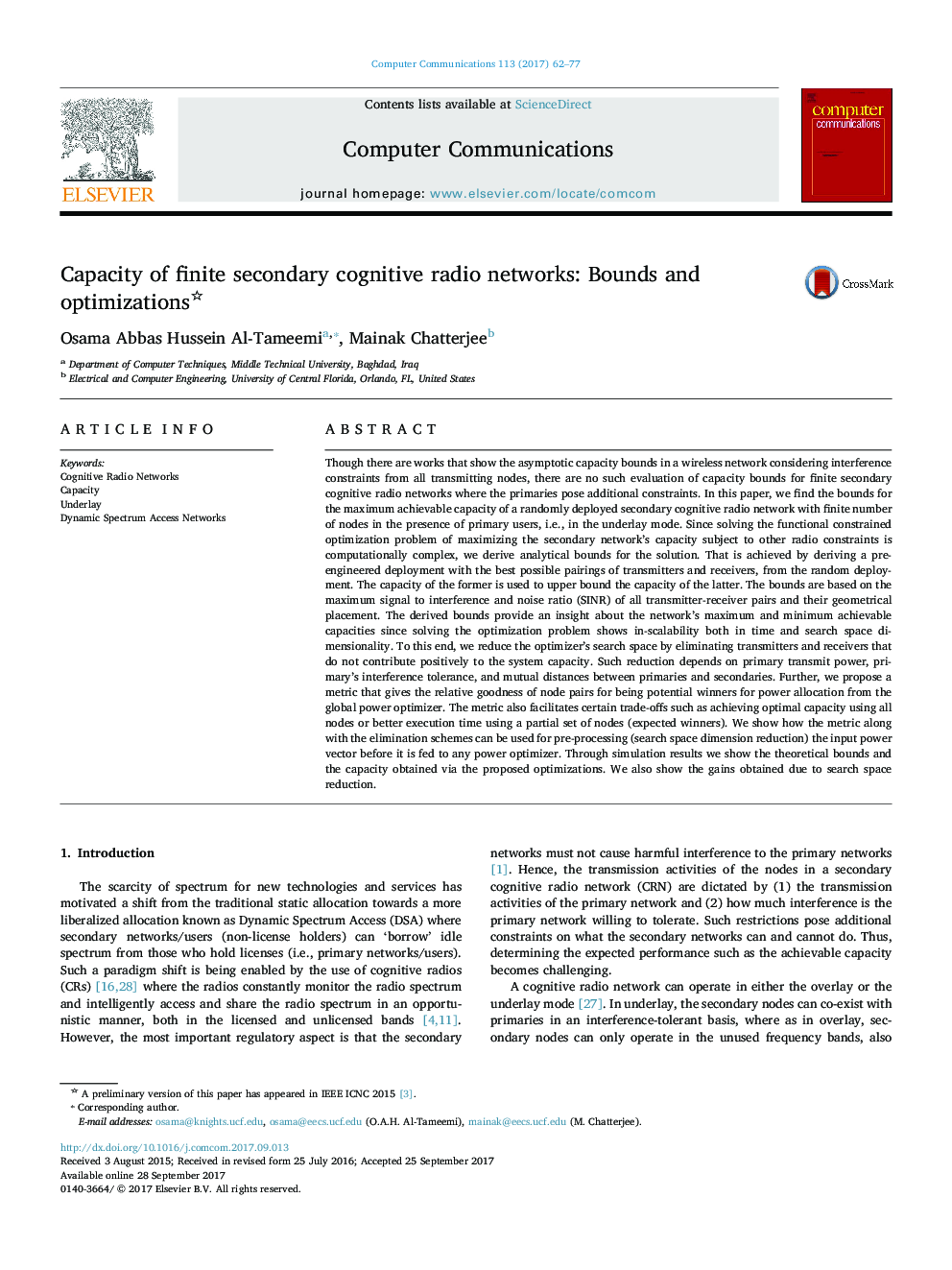| Article ID | Journal | Published Year | Pages | File Type |
|---|---|---|---|---|
| 4954238 | Computer Communications | 2017 | 16 Pages |
Abstract
Though there are works that show the asymptotic capacity bounds in a wireless network considering interference constraints from all transmitting nodes, there are no such evaluation of capacity bounds for finite secondary cognitive radio networks where the primaries pose additional constraints. In this paper, we find the bounds for the maximum achievable capacity of a randomly deployed secondary cognitive radio network with finite number of nodes in the presence of primary users, i.e., in the underlay mode. Since solving the functional constrained optimization problem of maximizing the secondary network's capacity subject to other radio constraints is computationally complex, we derive analytical bounds for the solution. That is achieved by deriving a pre-engineered deployment with the best possible pairings of transmitters and receivers, from the random deployment. The capacity of the former is used to upper bound the capacity of the latter. The bounds are based on the maximum signal to interference and noise ratio (SINR) of all transmitter-receiver pairs and their geometrical placement. The derived bounds provide an insight about the network's maximum and minimum achievable capacities since solving the optimization problem shows in-scalability both in time and search space dimensionality. To this end, we reduce the optimizer's search space by eliminating transmitters and receivers that do not contribute positively to the system capacity. Such reduction depends on primary transmit power, primary's interference tolerance, and mutual distances between primaries and secondaries. Further, we propose a metric that gives the relative goodness of node pairs for being potential winners for power allocation from the global power optimizer. The metric also facilitates certain trade-offs such as achieving optimal capacity using all nodes or better execution time using a partial set of nodes (expected winners). We show how the metric along with the elimination schemes can be used for pre-processing (search space dimension reduction) the input power vector before it is fed to any power optimizer. Through simulation results we show the theoretical bounds and the capacity obtained via the proposed optimizations. We also show the gains obtained due to search space reduction.
Related Topics
Physical Sciences and Engineering
Computer Science
Computer Networks and Communications
Authors
Osama Abbas Hussein Al-Tameemi, Mainak Chatterjee,
